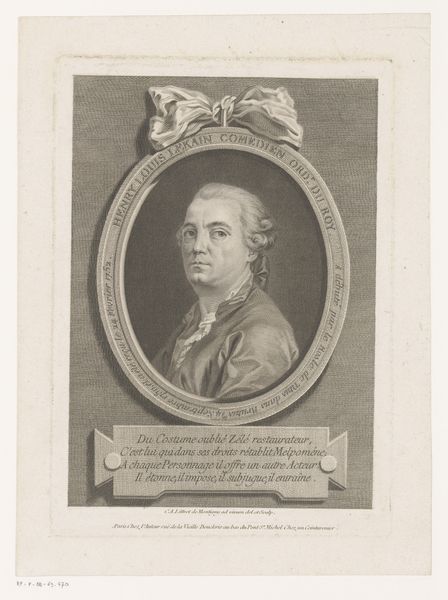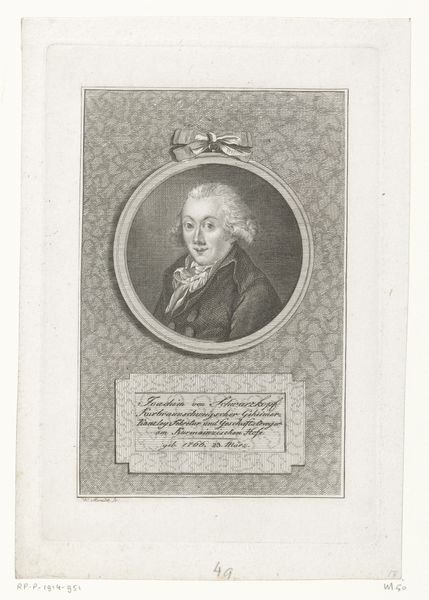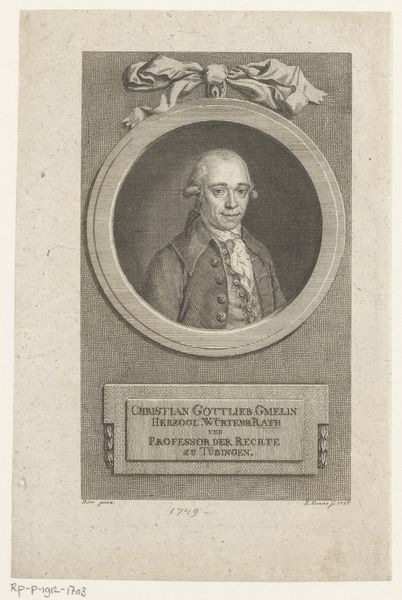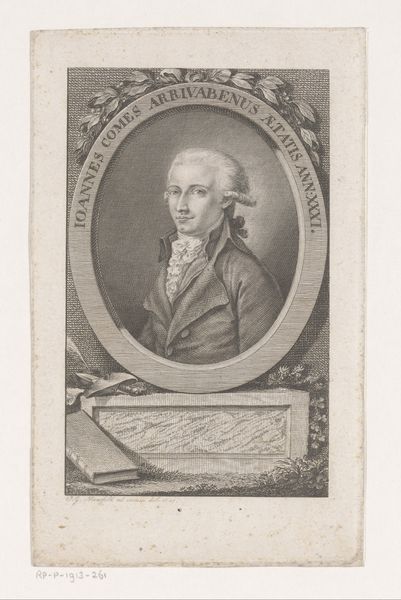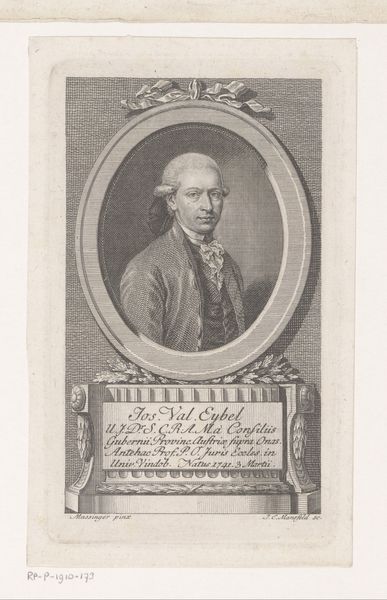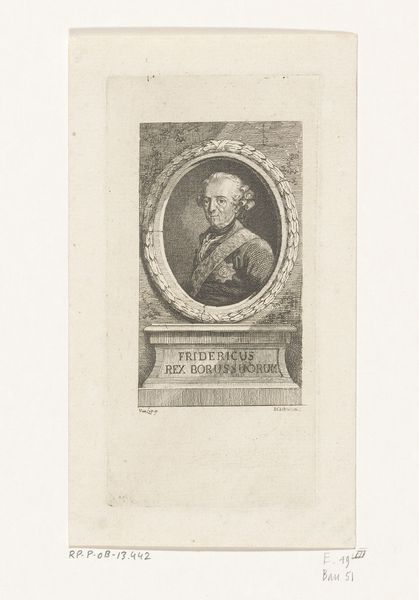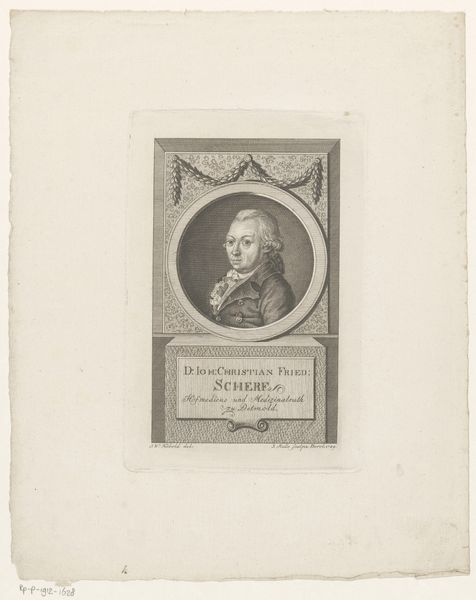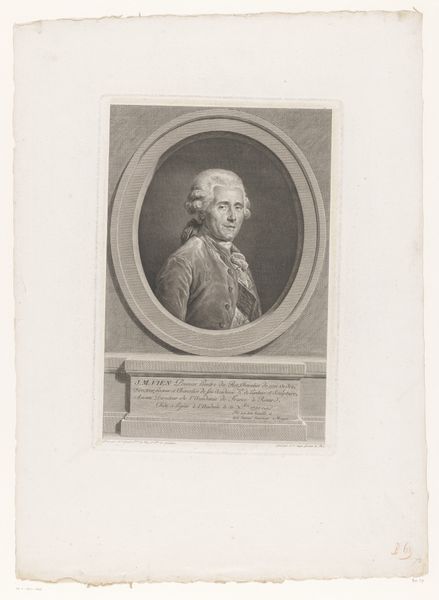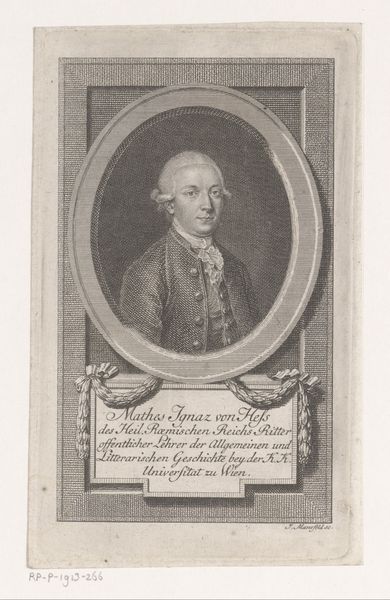
Dimensions: height 169 mm, width 112 mm
Copyright: Rijks Museum: Open Domain
Curator: Here we have a captivating portrait titled "Portret van Konrad Arnold Schmid," an engraving executed in 1787. It resides here at the Rijksmuseum. The artist responsible for its creation is Eberhard Siegfried Henne. What strikes you first about it? Editor: The formality is immediately apparent. The meticulous line work of the engraving lends the subject a sense of seriousness and intellectual weight, but it also gives the image a stiffness that is characteristic of its era. The neutral background pushes the sitter forward. Curator: Yes, this piece speaks volumes about societal values in the late 18th century. The subject, Konrad Arnold Schmid, held a professorship and council position. It seems his societal status needed to be very carefully expressed. Editor: Absolutely, his status is visually emphasized with a very careful and contained rendering of hair, garment, and presentation, and then literally underlined by a large and very explicit legend in large letters on the bottom half of the engraving. I see neoclassicism trying to shake hands with baroque. Curator: I think what is important to point out here, though, is that printed portraits such as these democratized images and status. For example, we know that the middle class bought, consumed, and collected printed works of this sort to help assert or align their values with elite social status and governance, thus altering our perception and experience of power. Editor: An interesting counterpoint to consider as well is how the seemingly endless reproduction via prints, like this engraving, paradoxically also erodes the aura of uniqueness and authenticity, questioning our engagement with this artwork. Curator: Very astute observations. Reflecting on our conversation, it’s been insightful to examine the convergence of social structures and the formal qualities. Editor: Indeed. There's something particularly powerful about how understanding its artistic design allows us to reflect on its social impact as well.
Comments
No comments
Be the first to comment and join the conversation on the ultimate creative platform.
